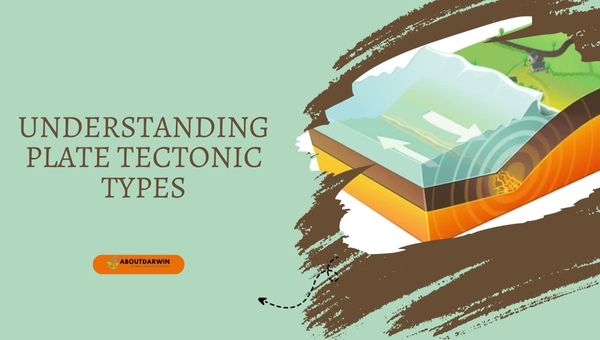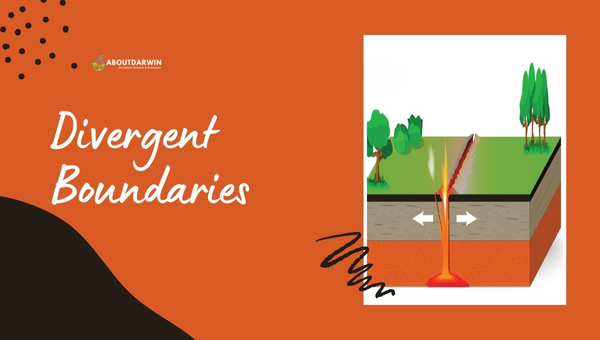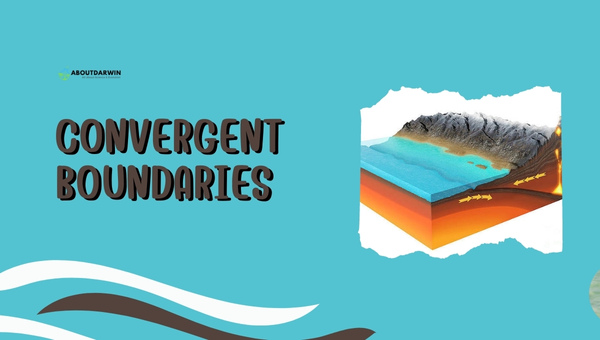Physical Address
304 North Cardinal St.
Dorchester Center, MA 02124
In the geological world, plate tectonics play a vital role in shaping our Earth’s landscape. Through these massive, constantly moving sections of the Earth’s crust, we experience the creation of mountains, oceans, and various geographical features.
There are three main types of plate tectonic interactions: divergent, convergent, and transform. Understanding these plate tectonic types can help us learn more about our planet’s ever-changing surface.
All these tectonic interactions help us comprehend how our planet’s physical aspects have evolved and allow us to identify areas prone to geological hazards such as earthquakes and volcanic eruptions.
Contents
The earth’s lithosphere is composed of broken segments called tectonic plates. These plates float on the asthenosphere, a softer, more fluid part of the upper mantle. They’re constantly moving, and their interactions result in various geological phenomena.

There are three main types of plate tectonic boundaries: divergent, convergent, and transform. We’ll explore each one’s features and impacts to understand these types better.
Read: Antarctic Plate Formation and Facts: All You Need To Know
At divergent boundaries, tectonic plates move away from each other. This movement occurs due to rising magma from the mantle pushing the plates apart.

When the crust stretches and breaks, it forms gaps known as rift valleys. Divergent boundaries are prevalent in both oceanic and continental settings. Examples include:
Some key features of divergent boundaries are:
Read: Eurasian Plate: Tectonic Boundary and Movement Explained
Convergent boundaries occur when tectonic plates move towards each other, sometimes colliding and causing various geological events. There are three possible combinations of convergent boundaries:

Finally, transform boundaries are characterized by plates sliding past each other horizontally. These boundaries don’t create or destroy the lithosphere; they realign it.
The most famous example of a transform boundary is the San Andreas Fault in California. It’s important to note that earthquakes are common at transform boundaries.
understanding plate tectonic types provides valuable insights into Earth’s geological processes. Each divergent, convergent, and transform boundary type brings unique features, movements, and consequences. By recognizing their differences, we can better comprehend the world around us and anticipate how these boundaries may shape our planet’s future.
Read: South American Plate: Tectonic Boundary and Movement Explored
Divergent plates are fascinating components of Earth’s geology. This section’ll discuss some crucial characteristics of these unique plate interactions.
Divergent plate boundaries are the areas where tectonic plates move apart. The key features of these plates include:
One of the most notable characteristics of divergent plates is the formation of new crust. As plates pull apart, molten rock from the Earth’s mantle rises to fill the space created by the separation. This upwelling of magma eventually solidifies, creating new oceanic crust.
When divergent boundaries occur underwater, they form mid-ocean ridges. The Mid-Atlantic Ridge, for example, is a continuous underwater mountain range that spans the entire Atlantic Ocean. These ridges have a central rift valley where the plates diverge, with new crust forming and spreading outward.
Divergent plate boundaries are also the sites of shallow-focus earthquakes. However, these are generally smaller in magnitude than those experienced at convergent boundaries. The divergence at these boundaries causes tensional forces that lead to normal faulting and the release of tectonic strain.
Another important aspect of divergent plates is continental rifting. When the separation process takes place on a continent, it can cause the land to split and create new ocean basins. The East African Rift is a prime example of this; over time, it’s expected to separate the African continent into two separate landmasses.
In summary, divergent plate boundaries exhibit several distinct characteristics:
Understanding these characteristics allows us to better appreciate the crucial role divergent plates play in continuously reshaping Earth’s surface, making our planet a dynamic and ever-changing environment.
Diving into convergent plate boundaries, it’s essential to understand the processes and features that define them. When two tectonic plates collide, they form these boundaries, and the interactions between the colliding plates create various geological features.
Three primary types of convergent plate boundaries exist: oceanic-continental, oceanic-oceanic, and continental-continental collisions.
Starting with oceanic-continental convergences, we find one plate being forced under the other. This process, known as subduction, occurs when the denser oceanic plate slides beneath the less dense continental plate. As the oceanic plate descends, it generates heat and releases water, causing melting in the mantle above. This melted mantle material, called magma, can rise to the surface and create volcanic mountain ranges along the boundary or nearby areas.
The second type of collision, oceanic-oceanic, also involves subduction. In this case, the denser of the two oceanic plates is pushed beneath the other. This type is associated with the formation of island arcs and deep-sea trenches. Some well-known examples of these geographical features include the Mariana Trench and the Aleutian Islands.
Lastly, continental-continental convergence happens when two continental plates collide, neither being dense enough to undergo subduction. The collision forms mountain ranges like the Himalayas, resulting in India’s continental plate crashing into the Eurasian plate.
To summarize, convergent plate boundaries have various features depending on the type of collision:
It’s interesting to note that convergent plate boundaries also contribute to the formation of earthquakes. The motion of the tectonic plates and the pressure build-up can eventually lead to a sudden release of energy, resulting in an earthquake. These events often occur along the boundary itself, adding another unique feature to this type of plate interaction.
In my exploration of plate tectonics, I’ve understood the importance of transforming plate boundaries in shaping our Earth. There are three fundamental types of boundaries between tectonic plates: divergent, convergent, and transform.
While divergent and convergent boundaries involve plates moving away from or towards each other, change boundaries are characterized by horizontally sliding past one another.
One notable feature of transform plate boundaries is the occurrence of earthquakes. Due to friction along the fault lines, stress builds up until it’s suddenly released, resulting in seismic activity.
Some of the world’s most renowned earthquake zones, like the San Andreas Fault and the North Anatolian Fault, are situated along transform boundaries.
Here’s a breakdown of the three main tectonic plate boundary types:
| Boundary Type | Movement Direction | Associated Phenomena |
|---|---|---|
| Divergent | Apart | Mid-ocean ridges, volcanic activity |
| Convergent | Towards each other | Mountains, volcanic arcs, subduction zones |
| Transform | Side-by-side | Earthquakes, fault lines |
The movement at transform plate boundaries also causes interesting phenomena, such as:
Understanding how transform plate boundaries contribute to Earth’s geological processes is essential for better predicting and preparing for natural disasters. By studying and monitoring the activity along these boundaries, we can gain insights into patterns of seismic activity, allowing us to improve emergency response and minimize property damage and loss of life.
Even though transform plate boundaries might not create majestic mountain ranges or impressive volcanic eruptions, they do play a vital role in shaping our planet. Moreover, investigating these geological features can help us learn more about Earth’s dynamic inner workings and the forces governing its ever-changing landscapes.
I’ve delved into the fascinating world of plate tectonics, exploring the different types of boundaries and the processes that shape our planet. We’ve learned that there are three primary types of plate boundaries: divergent, convergent, and transform plates, each with their unique characteristics and geologic activity. Now, let’s briefly discuss the impacts and interactions between these plates.
Plate tectonics play a critical role in shaping Earth’s surface and influencing its geological processes. Here are some key impacts and interactions of plate tectonics:
As a result of the movement and interactions between different plates, Earth’s surface is ever-changing. Understanding these forces is crucial for mitigating the risks associated with earthquakes, volcanic eruptions, and other natural disasters.
Furthermore, studying plate tectonics is essential in pursuing resources like mineral deposits, oil and gas reservoirs, and suitable locations for geothermal energy production.
plate tectonics not only influences our planet’s appearance and structure but also significantly impact our lives. As we continue to deepen our understanding of these powerful forces, we’ll be better equipped to harness their benefits and cope with their challenges.
The world of plate tectonics is a complex and fascinating one, offering countless opportunities for exploration and discovery.